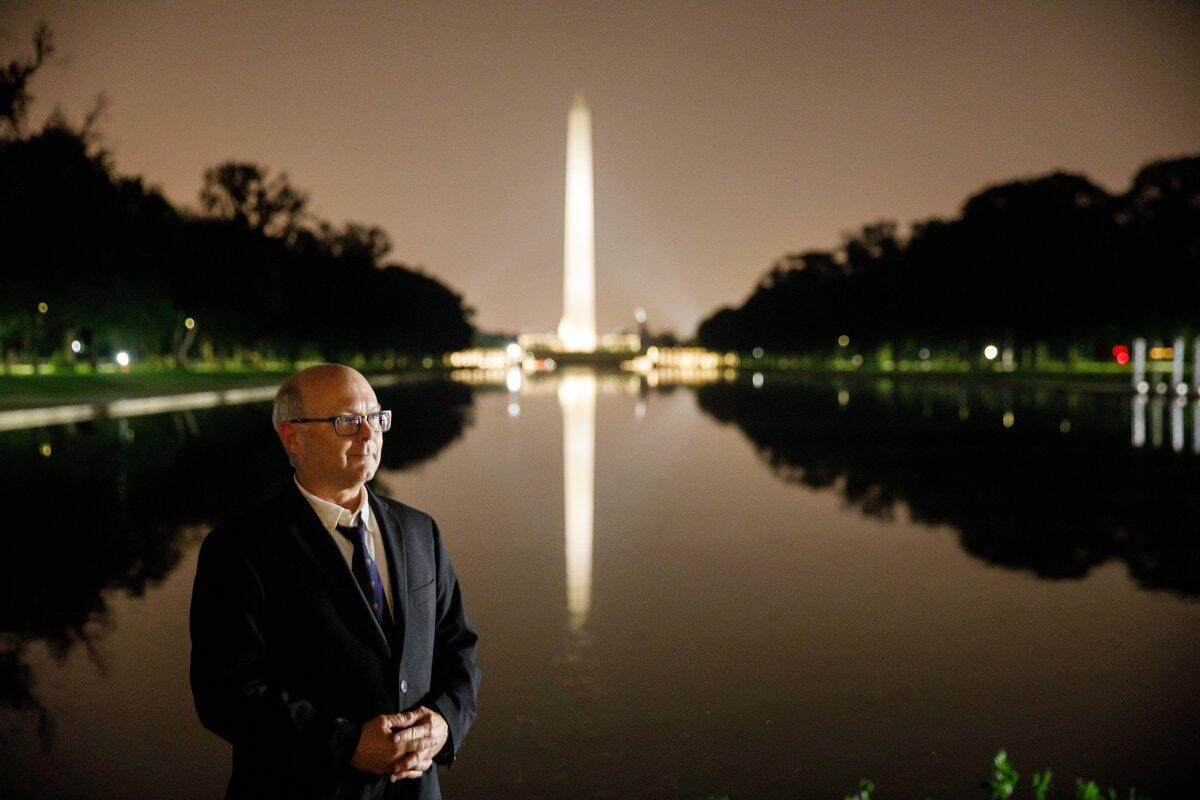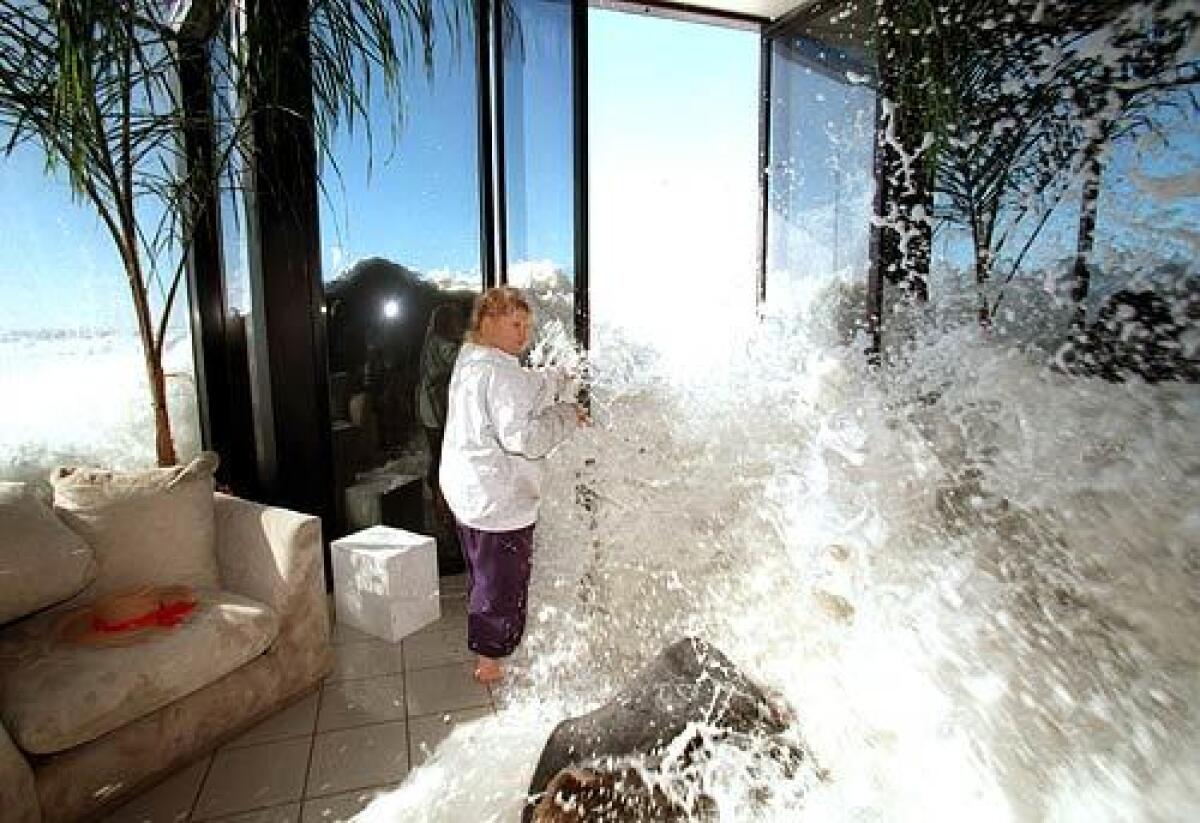L.A. Times photo editor Alan Hagman dies at 55; ‘always the nicest person in the room’

- Share via
Alan Hagman, a veteran Los Angeles Times photographer who captured defining Southern California images with his camera and as an editor relied on a skilled eye to tell stories from Seattle to Singapore with powerful and arresting pictures, has died at his home in Long Beach.
Hagman, who was 55 and had been in good health, died Monday. No cause of death was immediately determined, though friends said they were told he may have had a heart attack.
While he was admired as a photographer and respected deeply as a photo editor, the quality that seemed to follow in his wake was one of kindness and civility.
“He was always — and I mean always, always, always — the nicest person in the room,” said Rick Loomis, a former Times photographer and a close friend.
A Kansas kid, Hagman arrived at The Times in 1987, assigned to the Ventura bureau. His early body of work seemed to capture the raw elements of Southern California — the hills on fire, the pounding surf stirred to a pitch by a winter storm, the landscape rearranged by the Santa Ana winds.
One memorable photo in 1998 seemed to capture the futility of standing up to Mother Nature — a woman trying helplessly to close a sliding glass door as the white wash from the pounding surf churns into the living room of her beachfront home.

As he headed out on assignment that day, Hagman’s car had been hit by a wave on Pacific Coast Highway and pushed into a pile of rocks, flattening a tire and denting the bumper. Worried that he would miss his assignment and have only a wrecked company car to show for his efforts, Hagman walked to a nearby house and waited for a tow truck. Though the high tide had retreated, a rogue wave reared up and slammed into the home, giving Hagman an image that landed on the front page and ran in newspapers and magazines around the world.
Hagman was born Jan. 11, 1964, in Fort Wayne, Ind., and grew up in Pittsburg, Kan., an old coal mining town near the Missouri border. By middle school, his interests had narrowed to photography and sports. He studied journalism at the University of Kansas, where he was a lead photographer on the school newspaper.
He turned an internship at The Times into a full-time job, a rarity then and now. He went on to become a photo editor and eventually the paper’s deputy director of photography.
Ben Welsh, the graphics and data editor at The Times, said Hagman was a key ally in his early quest to bridge the gap between the old-school newspaper and the possibilities of digital journalism. The paper’s website and its newsroom were firmly planted in different corners when the two began working together.
“He was a key player in the effort to produce ambitious digital journalism at the L.A. Times,” Welsh said. “He embraced it.”
Welsh pointed to The Times’ ambitious online projects California’s War Dead and Mexico Under Siege as early examples of the new online teamwork. The former was an exhaustive interactive collection of obituaries, remembrances and photos of the more than 750 Californians killed in the wars in Iraq and Afghanistan; the latter a years-long look at the extreme toll of the Mexican drug wars.
While Welsh found a partner in Hagman, Loomis found a roommate.
At the time, Loomis worked in The Times’ Orange County bureau and Hagman in Ventura. They split the difference and bought a duplex in Long Beach with the understanding that as soon as the lone tenant moved out, they’d each take one of the units. But they got along so well that when the tenant left, they remained roommates and rented out the other unit. And when Loomis met his future wife, she moved in too.
Though Hagman exuded a simple prairie state charm, he was a person of refinement who enjoyed fine wines, cooking and traveling throughout the country to jazz concerts, bluegrass festivals and anything that had a possible link to the Grateful Dead.
His sister, Jennifer, who said she talked or texted with her brother on a near-daily basis, said he was a consummate trip planner and could easily tell someone heading to the New Orleans Jazz & Heritage Festival or the Telluride Bluegrass Festival where to have a pre-concert meal or how to keep an eye on the stage while enjoying a craft beer.
He was also a hopeless Kansas Jayhawks basketball fan. He collected knickknacks and memorabilia, flew off to home games and adopted a look of grim resignation if the team crashed out of the tournament earlier than expected, though he’d be reborn and filled with new hope once the next season rolled out.
Loomis said that when he left California and moved east, Hagman gave Loomis one of his prized possessions — the smoker he used to cook brisket, pulled pork and ribs for his friends. Of course, Loomis said, Hagman quickly bought a fancier one.
Hagman is survived by his parents and sister.
More to Read
Start your day right
Sign up for Essential California for the L.A. Times biggest news, features and recommendations in your inbox six days a week.
You may occasionally receive promotional content from the Los Angeles Times.







